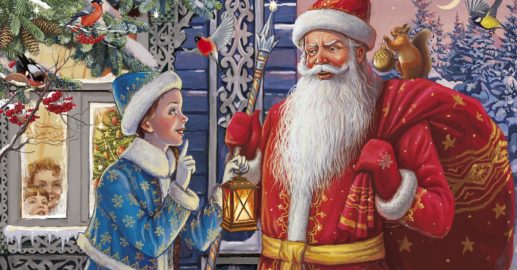Is Santa Good Or Evil? Here's 4 Different Version of “Santas” Around The World
Santa is always portrayed as a jolly good person who eats cookies and showers the good children with presents, but is that always the case? Well, as one of the pioneers of horror in Malaysia, we decided to do some research to find out if he is truly as jolly and good as he is. What we discovered is that different regions have different views on how Santa should look like - some are good & some are just straight up spine chilling. Here are 4 different “Santas” as seen around the world.
A menace that is half goat and half demon, that is Krampus! His name is derived from the German word “krampen” which means claw and is said to be the son of the mythical Hel in Norse mythology. Many European cultures would welcome St Nicholas as the figure of good, who rewards those deserving, but they also fear his menacing counterpart, Krampus who punished the bad. It was said that if you were a wicked child, Krampus would swat you, stuff you into his sack and would take you back to his lair. What happens there? Maybe best to be nice and not find out!
2 - Le Pere Fouettard (France)

A bearer of gifts and a child beater! In France, Santa is similar in the fashion sense of wearing red, however there are some differences. Here, Pere Noel would wear a red cloak with a hood trimmed in white fur rather than the red Santa hat. Traditionally, children would not put christmas socks near the chimney or to expect presents under a tree. Instead, on Christmas Eve, children would leave their shoes by the fireplace and would leave treats for Pere Noel’s donkey. He would take the offerings and if the children have been good, will leave presents in the shoes.
So far so good, right? Well, that’s if you are a well behaved child. If not, well expect a visit from Le Pere Fouettard, who follows Father Christmas and umm, “beats” the badly behaved children. He is known to be armed with a whip, a large stick or carrying a bundle of switches. In some descriptions of him, it was said that he would carry a wicker backpack that he will use to place the naughty children and carry them away. Some stories portrayed him as a murderer who killed children only to repent after meeting St. Nicholas. Some even said that St. Nicholas forced Pere Fouettard to be his assistant as punishment for his crimes.
3 - Ded Moroz - (Russia)

A snow demon monster who is also a hero? Like the Western Santa that everybody knows, even the Russian Santa went through many different incarnations. His origin was known as “Father Frost” or “Grandfather Frost”, with his history being traced back to Slavic mythology before Christianity. According to these myths, Ded Moroz was known as a snow demon / monster to some but also as a powerful hero that can chain water with his “iron” frosts. There were even rumors that he was an extremely cruel figure, with some folktales suggesting that he would kidnap children, and their parents can only have them back if they gave Ded Moroz gifts.Eventually, as the Soviet Union collapsed in the 90s, most people living in former Soviet states would return to celebrating Christmas, although Ded Moroz is still celebrated in Russia.
4 - Gryla & The 13 Yule Lads (Iceland)

The concept of Santa in Iceland is much, much different compared to what we know of him nowadays! Gryla is known as a giantess and horror stories are told of her to scare children into behaving! Throughout the year, it was said that she would collect whispers or stories of children misbehaving, and when winter sets in, she will gather them, cook them in a pot and turn them all into a giant stew to sustain her until winter…
If the threat of a sinister old witch threatening to eat you wasn’t bad enough, you would also have to deal with the 13 Yule Lads or trolls that would descend down the mountains to annoy the town folks! Each Yule Lad had their own quirks, from slamming doors, peeking into windows at night and even licking the spoons of households! Of course, as Christmas became more popular the stories would eventually morph into more family friendly stories instead of the sinister origins.
Conclusion
Those are the many different types of “Santas” you will encounter around the world. As you can see, a lot of stories of Santa told around the world before the popularity of the well - known jolly figure are quite terrifying! However, all these stories above are myths and were told to ensure that children behave themselves, as most stories only involve naughty children being punished. As such, we would like to wish everyone Merry Christmas, and to ask our readers, do you have your own version of a Santa?
Useful Links
Learn More
Social
©Copyright 2023 Superdough Sdn Bhd (1079878-W) | All Rights Reserved
